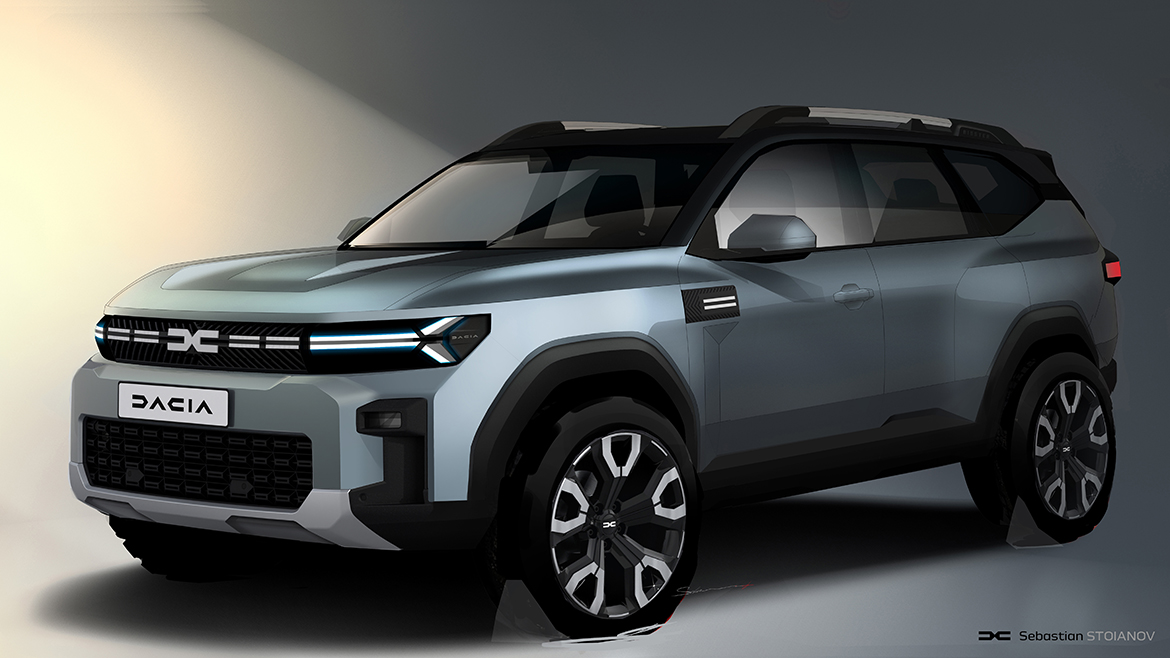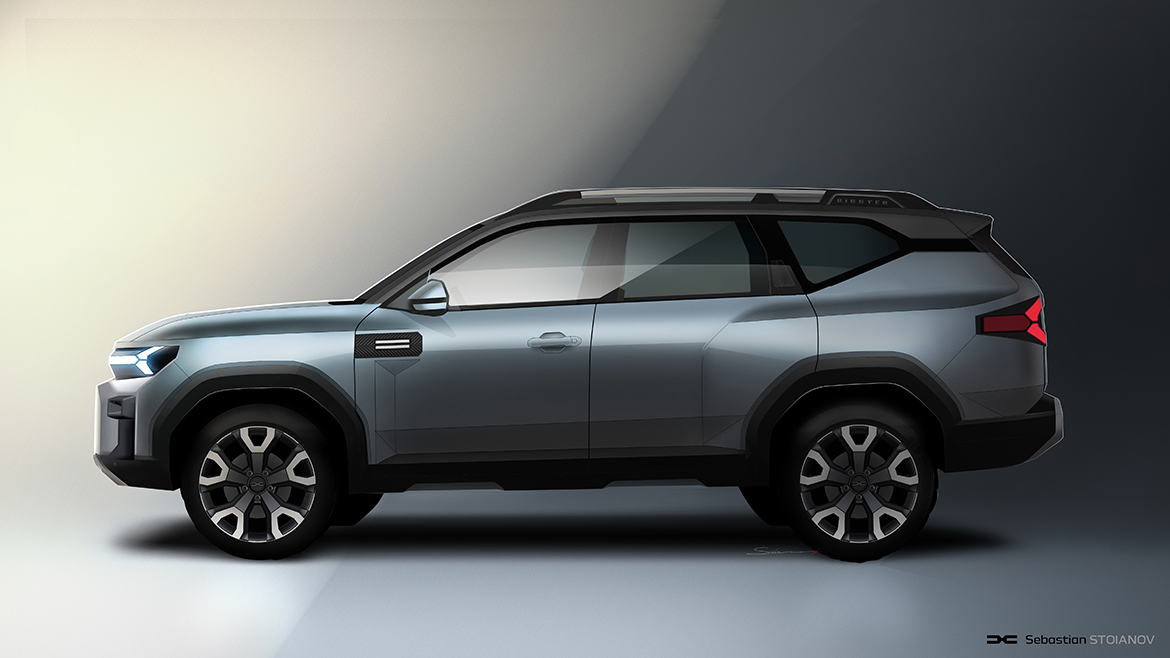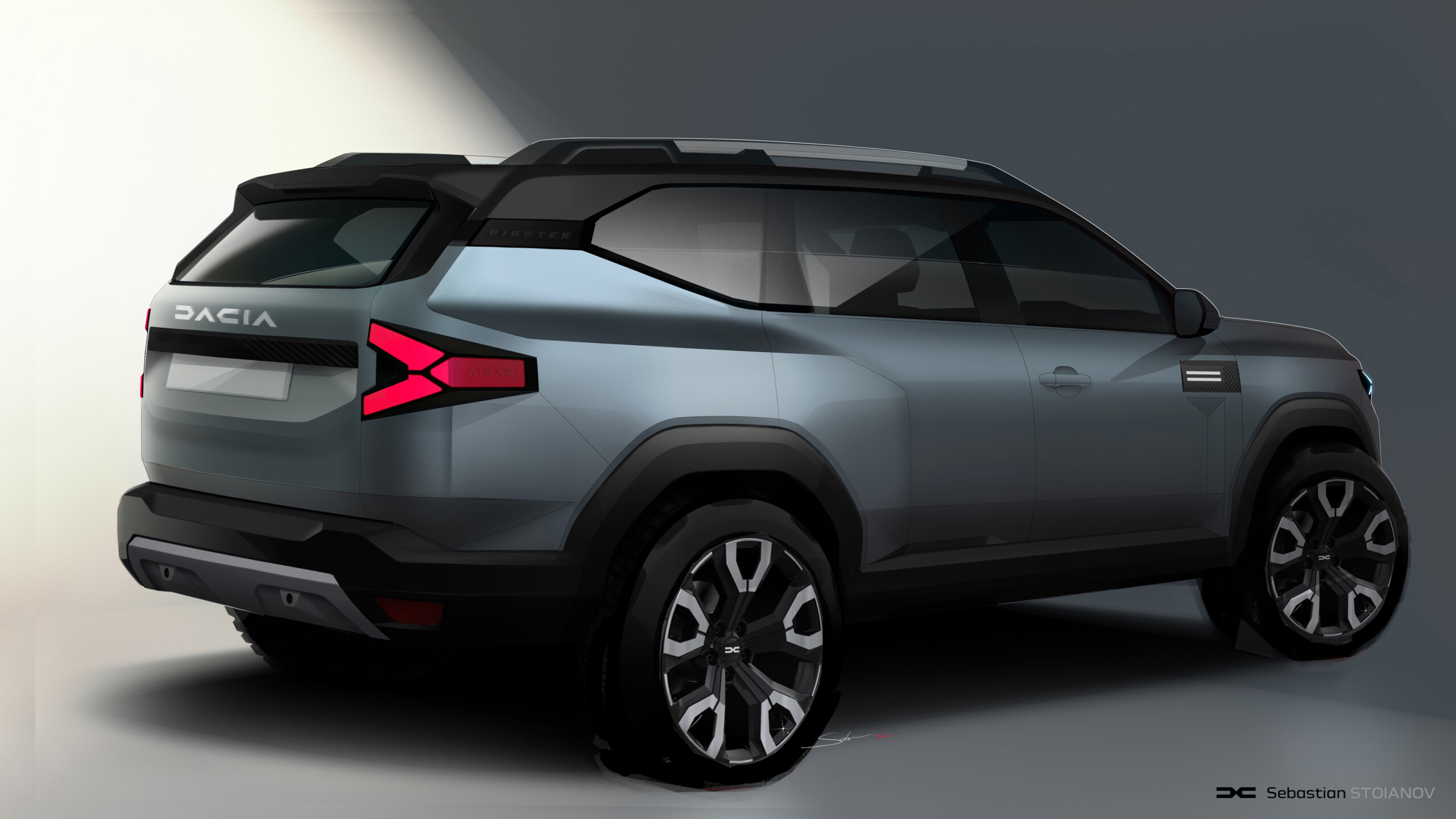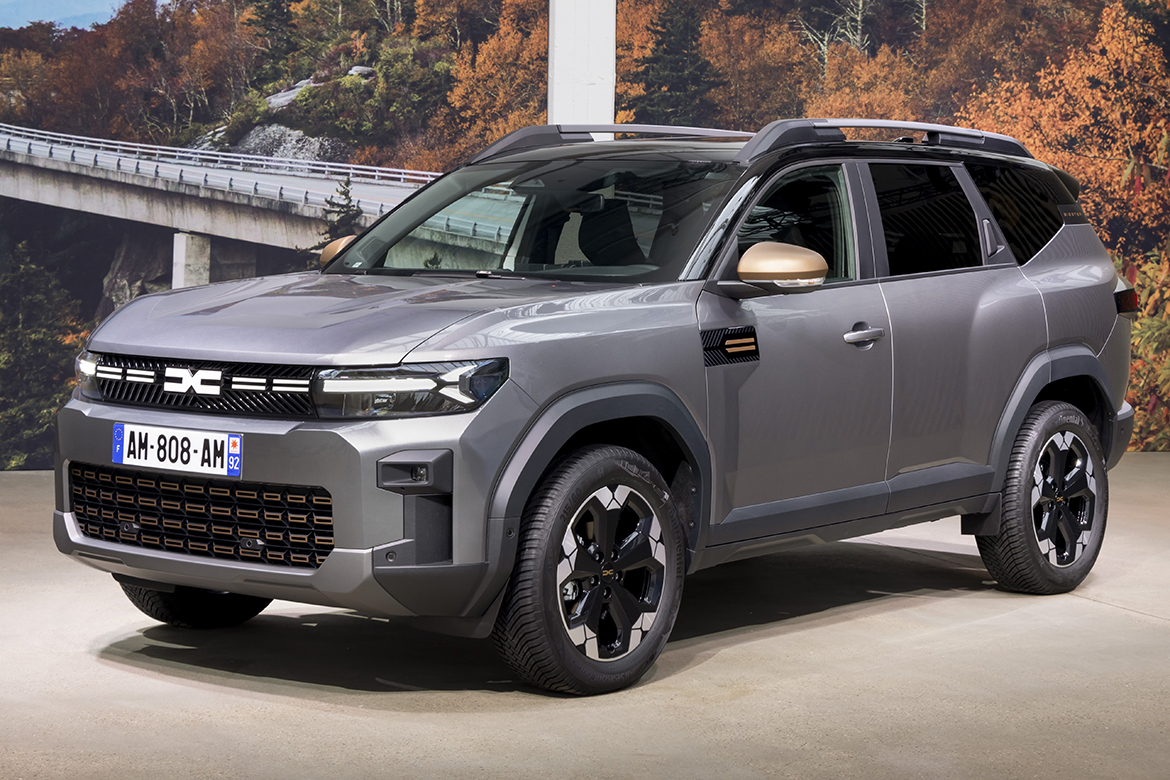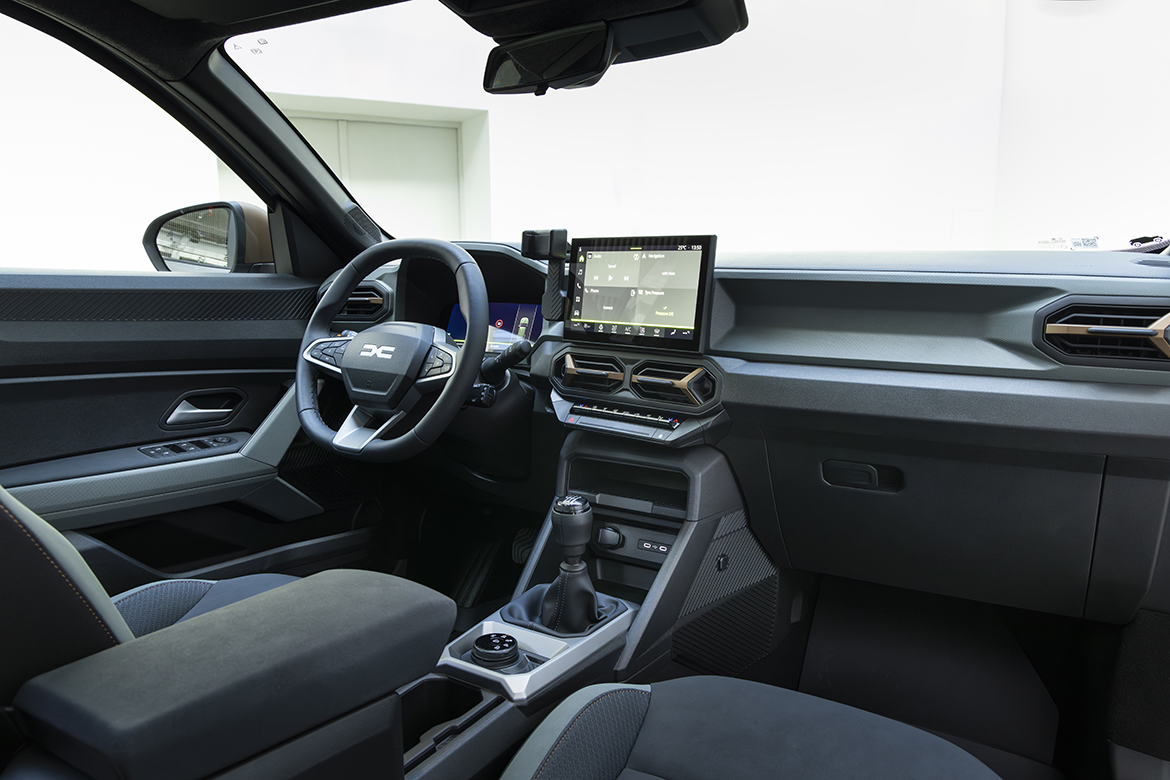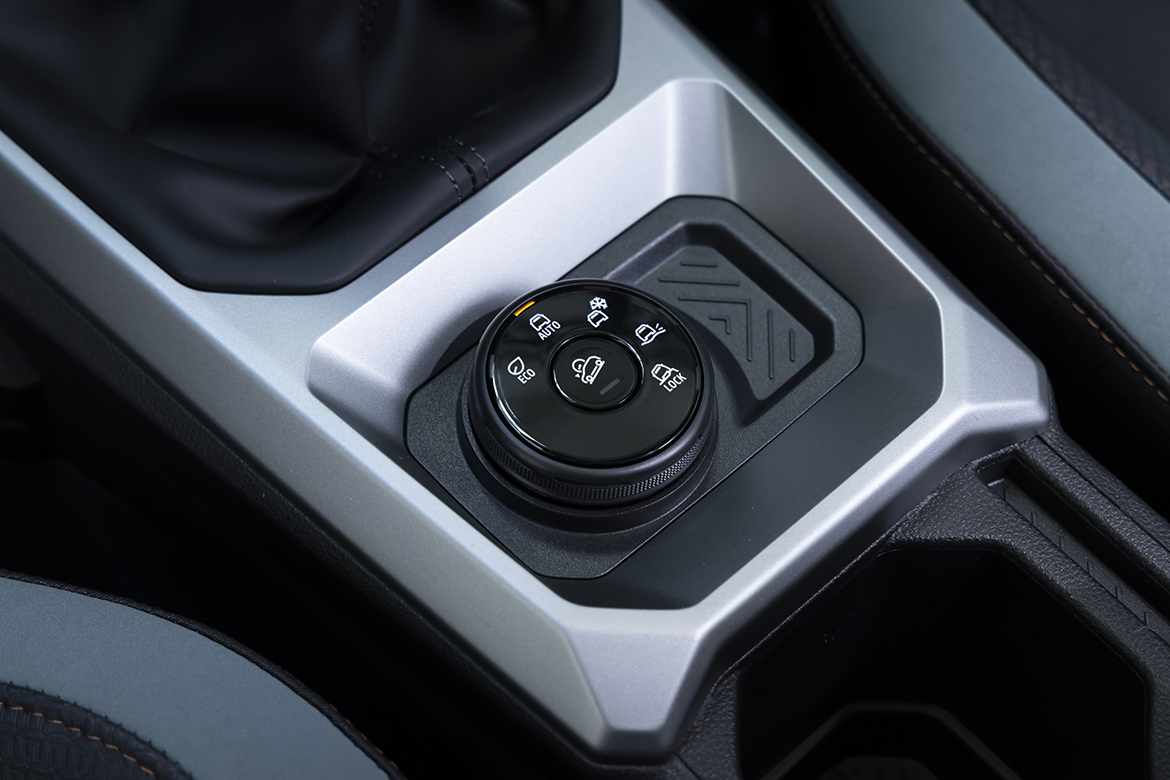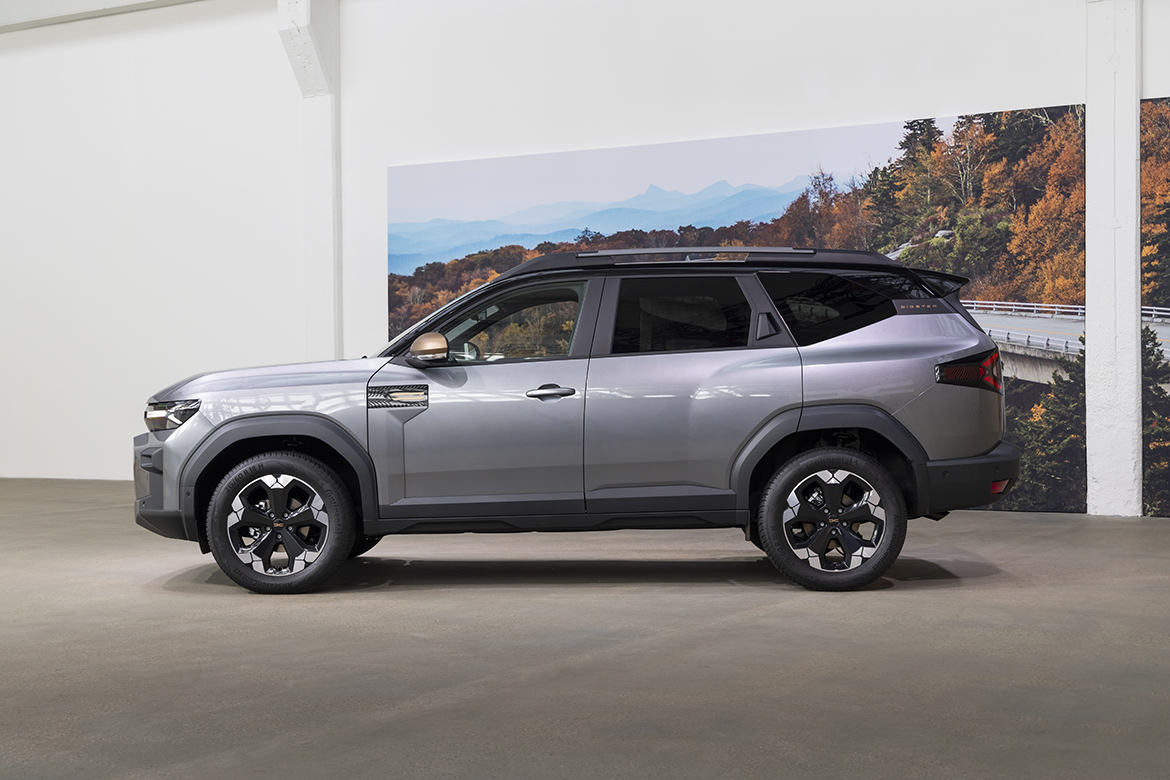“My challenge is to say nothing is impossible,” says Dacia’s head of design, David Durand. “I tell my designers, constraints mean creativity.” And when Dacia decided to enter the hyper-competitive (and profitable) C SUV segment with the Bigster, Durand’s team knew that they had to keep costs and diversity to a minimum. They started from the premise that the Bigster would be the same as the new small Duster (launched earlier this year) up until the B pillar. Then, they sought to create a credible, high-performing compact SUV that would start at less than 25,000 euros.
“With the Duster, we know the B SUV segment very well,” Durand said in an interview in Berlin, where the Bigster was revealed to the press ahead of the Paris auto show Oct. 14-20. “For the C SUV segment, it’s not the same story. Nobody is waiting for Dacia, and we have to convince them we have a serious offer.” Serious, for Durand, means the Bigster has a strong, vertical front end; large, simple volumes (and one of the largest cargo spaces in its class), and the ability to fit up to 19-inch wheels under aggressively flared and plastic-cladded fenders. The Bigster stretches out the Renault Group’s CMF-B platform up to the compact class. The Bigster is 4.57 meters long, 25 cm more than the Duster; 1.71 meters high (+5 cm vs. the Duster) and has a 2.7 meter-long wheelbase (+4 cm).
Durand and his team did more than add longer doors to the Duster to create the Bigster. Mindful of retaining the correct proportions, some of the new length is in a longer overhang and extended rear side windows. Rear seat passengers benefit from generous knee room as a result; and the rear cargo space is 667 liters, 150 liters more than the Duster. “It was all about getting a good balance,” Durand said. If the proportions aren’t right at first glance, he said, the design loses credibility. Fine-turning the proportions of the Bigster also saves money, he said. “When you don’t have good proportions, you need to put on ‘makeup’ to hide a big overhang, for example.”
But that ‘makeup’ comes at a cost, he said, in extra parts, chrome, contour lines, “and you start to make the car look busy. That’s not our approach.” In the end, will the Bigster persuade buyers in the C SUV segment, to give Dacia a chance? Durand sees the Bigster, in particular, attracting those who now have a B segment SUV or even a used midsize car. “They’ll say, OK, this offering from Dacia, it’s big, it’s well designed, it’s serious, it gives me everything I need,” he said. “Maybe it doesn’t have this feature or that feature, but honestly for the price, I don’t care.”

